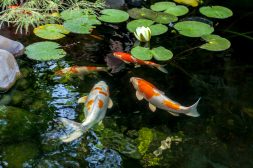Definition
noun
A hypokinetic disorder characterized by the inflexibility or stiffness of the limb that is maintained equally throughout the passive flexion
Supplement
Lead-pipe rigidity is a type of movement disorder, i.e. a hypokinesia that pertains to decreased bodily movements. The loss is due to a disruption in the basal ganglia. An example of a condition exhibiting a hypokinetic disorder is the Parkinson’s disease. Patients suffering from Parkinson’s disease would experience rigidity in their muscles. They would also not be able to produce movement in the affected muscle. The various forms of hypokinetic disorders include akinesia, bradykinesia, dysarthria, dyskinesia, dystonia, freezing, neuroleptic malignant syndrome, postural instability, and rigidity.
Rigidity is characterized by an increase in muscle tone. This causes resistance to externally imposed joint movements.1 It affects both agonist muscles and antagonist muscles. It is associated with patients with Parkinson’s disease. Two forms of rigidity observed are the cogwheel rigidity and the lead-pipe type. The difference between the two is that in cogwheel rigidity there is tremor superimposed with background increase of tone whereas in lead-pipe rigidity there is a relatively uniform rigidity in both agonist and antagonist muscle group.2
See also:
- Parkinson’s disease
- hypokinesia
Reference(s):
1 O’Sullivan, Susan B.; Schmitz, Thomas J. (2007). “Parkinson’s Disease”. Physical Rehabilitation 5. Philadelphia: F.A Davis Company. pp. 856–857.
2 Teddy Poh. (2013). SPASTICITY VS RIGIDITY. Retrieved from https://teddybrain.wordpress.com/2013/01/01/spasticity-vs-rigidity/







